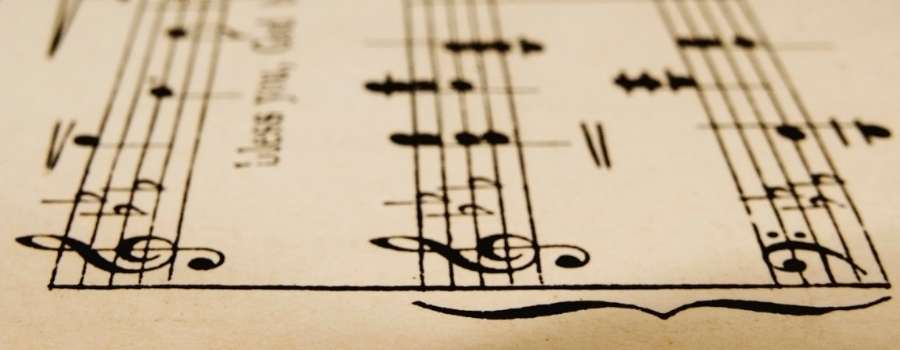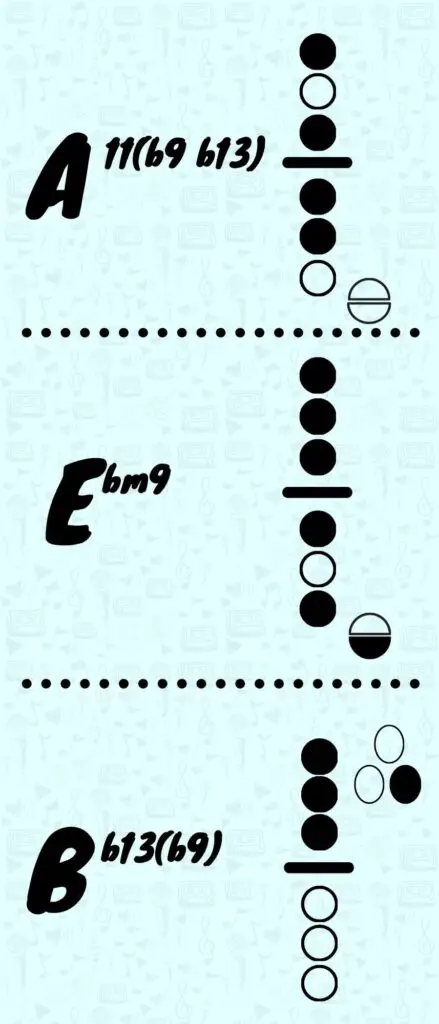
A saxophone cannot play chords on its own due to it being a monophonic instrument, meaning an instrument that can only play one note at a time. However, there is an advanced technique called “multiphonics” that will allow a single saxophone to produce more than one note at a time.
In addition to multiphonics, we are lucky enough to live in an age where technology is cheap…and a lot of software is free…so that we can become virtual “one-man-bands.”
Musicians today can explore looping, home recording, accompanying software, and…the best way to play chords, in my opinion…find other saxophone players and start a saxophone quartet.
Table of Contents
Why Can’t a Saxophone Play Chords?
Even though a saxophone has multiple keys there is still only one body and one mouthpiece to produce a sound. Unlike a piano, which has multiple keys, strings, and hammers to produce multiple sounds simultaneously.
Like I said above, saxophones are only able to produce one note at a time…this is called monophonic, mono = one, phonic = sound/voice.
The only way a saxophone could produce multiple tones…which is called polyphonic…is if there were multiple tubes attached to the mouthpiece, each with its own set of keys. If you have ever tried to play two recorders or kazoos at the same time, this is the same idea. Now, a big downside that you may realize is that a saxophone takes both hands and all ten fingers to play, so playing two or three saxophones at the same time would be impractical, not to mention very heavy.
Now, having said all that, as you advance in your saxophone playing skills you will start to learn more advanced techniques…one of which will allow you to play multiple notes at the same time.
What Are Saxophone Multiphonics?
Multiphonics is a playing technique common to saxophonists which allows them to play two or three tones at the same time. This is accomplished through a combination of embouchure control and non-standard fingerings, sometimes called cross-fingering. With practice, they can have a glassy, ethereal sound.
While clear, recognizable triads (three-note chords) are very difficult to pull off, playing a two-note chord is a little bit easier with enough practice. The tones produced are usually close to each other in pitch, so great control is needed to avoid too brash of a sound. It also takes a great deal of ear training to recognize that even if the pitches are dissonant to each other, they are still in tune.

Multiphonics are a great technique to learn to be able to play advanced concert solo music and a good player will be able to create some interesting tones and textures, but they will never be able to produce true, clear, in-tune chords like a piano player can.
One of the most famous examples of multiphonics is John Coltrane’s “Harmonique.” In this tune, Coltrane manages to play 3 distinct multiphonic chords, Bb major, B major, and Eb major.
Being a more “modern” technique, multiphonics is ideally suited for jazz music, as the shimmering, dissonant quality…which is produced due to the closely related overtones…fits well with the stacked chords used in jazz.
There are many resources available online to teach fingerings for multiphonics…I’ve even included a few in the chart below…however, it should be noted that while any fingerings mentioned are a good starting point, you may need to alter some of them to get the results you desire.
This is why multiphonics is such an advanced technique, not only is great breath and embouchure control required, but you may also need to invent your own fingerings.
Can Multiphonics be Played on any Saxophone?
Multiphonics can be played on any saxophone, though it may be more difficult to produce them on a soprano sax due to its smaller bore size and the tighter embouchure needed to play it.
Multiphonics is a technique in which multiple pitches are produced simultaneously on a wind instrument. While multiphonics are most commonly associated with the saxophone, they can also be performed on other woodwind instruments such as the flute, clarinet, and oboe.
To produce multiphonics on the saxophone, the player manipulates various elements such as embouchure, fingerings, and airflow. By combining different fingerings, partial harmonics, and specific voicings, the saxophonist can generate complex and unique combinations of pitches.
It’s worth noting that the ease of producing multiphonics and the quality of the resulting sounds may vary depending on the specific saxophone and the player’s skill level.
Some saxophones, particularly those with certain keywork configurations or design features, may lend themselves more readily to multiphonic production. However, with practice and experimentation, it is possible to achieve multiphonics on any saxophone.
Soprano Saxophone
Multiphonics on the soprano saxophone can be more challenging compared to other saxophones due to its smaller size and higher pitch range.
The smaller bore and tighter key spacing can make it more difficult to manipulate fingerings and achieve stable multiphonic sounds. While multiphonics are possible on the soprano saxophone, they may require more precise embouchure control and experimentation.
Alto Saxophone
The alto saxophone is a popular choice for playing multiphonics. Its medium size and range make it well-suited for producing multiphonic sounds.
Many saxophonists, particularly those with intermediate to advanced skills, explore multiphonics on the alto saxophone. As a result, multiphonics are frequently asked for on the alto saxophone in contemporary saxophone literature and experimental music.
Tenor Saxophone
Similar to the alto saxophone, the tenor saxophone is often used for multiphonic playing. Its larger size and lower pitch range provide more room for manipulating fingerings and producing complex multiphonic sounds.
Many saxophonists, especially those focusing on contemporary or avant-garde music, frequently incorporate multiphonics into their tenor saxophone repertoire.
Baritone Saxophone
The baritone saxophone, being the largest of the four main saxophones, presents both advantages and challenges for multiphonic playing.
Its size allows for more finger manipulation and airflow control, which can lead to a broader range of multiphonic possibilities. However, the large size of the instrument also requires greater embouchure strength and control.
While multiphonics are less commonly requested specifically for the baritone saxophone, they can still be explored and incorporated into its repertoire.
What Is Real-Time Looping?
Real-time looping is using electronic recording equipment to play or sing a line of music and have it repeat (loop) in real-time so that you can play a second, third or more line over it, recording each pass as you go. Foot pedals and sliders assist in the looping, effects filters, and play controls needed to create fully realized musical tracks.
With some basic equipment, you can play a line of music and set it to repeat as many times as you’d like and play/record another line over the first, all in real-time. You’re only limited by how much hard drive space your computer or loop station has. One musician can literally sound like dozens, built up one track at a time.
Loop stations are a popular tool with modern musicians as it allows them to do more with less (meaning, more sound with fewer players) and can be used to create some impressive effects. Guitar players and synthesizer players can alter their tone using various effect pedals and filters and end up sounding like a full band or orchestra.
How does this apply to a saxophonist? Well, since you are controlling the music you play you can take a beat or two to swap out instruments between loops, allowing you to become a sax quartet, wind quintet, or full ensemble…you’re really only limited to your own musical abilities.
If you have any desire to improvise while you perform, a loop station will allow you to create custom music in real-time, which is a pretty cool piece of showmanship that impresses audiences. Look into bundles since you’ll need foot pedals, an effect board, a microphone, speakers, and cables.
One bundle you might want to look into is NUX Loop Core since it comes with a pedal, effects board, and cables. Of course, you might want different filters or effects, but this model is a good place to get started in your research.
What Kind Of Software Or Apps Can I Use To Record Myself Playing Music?
| Software | Platform (iOS, Mac, Win) | Price |
| Cubasis | iOS, Android | $50 |
| BandLab | iOS, Google | $Free |
| Cubase | Mac, PC | $588 |
| Audacity | Mac, PC | $Free |
There are dozens of computer programs and apps ranging from free to hundreds of dollars available to people wanting to record music.
Cubasis, the smaller brother of Cubase, is available on the iPhone and iPad and will allow you to record audio and create MIDI tracks to use as accompaniment. Cubasis will set you back $50, but BandLab is free…with the obligatory “in-app purchases.” This app will also allow you to record audio and MIDI.
For laptops and desktop computers you can use audacity as a free option for audio recording and editing. Audacity is great for audio thanks to all of its presets and tools, but there is no MIDI capability at the moment.
If you’ve been saving up your nickels and dimes then you might want to check out some more robust programs available. Cubase is my personal go-to DAW (Digital Audio Workstation) due to its superb recording and MIDI capabilities.
Sonar, Logic Pro, and FL Studio are other DAWs that offer similar features to Cubase. The added bonus to these more rounded programs is that they also allow musicians to play with loops, which is a common starting point for people that want to compose music but don’t know music theory or music notation.
Since we’re talking about recording saxophone tracks…and multiple saxophone tracks at that, you’ll also need to look into microphones, audio interfaces, and other toys to get a fully functional recording studio.
For this, I’d also recommend looking into a bundle of gear, since you can get almost everything you need to get started.
As you develop as a musician you can add or upgrade equipment. A good starting point for home recording is the Presonus AudioBox iTwo USB 2.0 Recording Bundle. It has headphones, an audio interface, a microphone, and cables to get you going as a recording musician and is compatible with Mac, Windows, and iOS.
What Is A Saxophone Quartet?
In general, a saxophone quartet is comprised of four saxophonists, usually a soprano, alto, tenor, and baritone player. Another common combination is two altos, tenor, and baritone however, any combination of four saxophones will make up a quartet.
The final way to play chords on a saxophone is to, well, add more saxophones. I know this isn’t exactly what you might be looking for, but playing music with other musicians is one of the best experiences you can have.
Facebook, local schools, and meetups are great ways to find musicians in your area to start playing with.
Don’t be limited to just other saxophone players, find any number of musicians to start playing with…the more eclectic the better. Playing with other musicians will help you flesh out your music reading skills, intonation, and “riffing” off each other.
Final Thoughts
If you’re just beginning to play the saxophone, focus on intonation, breath control, and scales. Getting these fundamentals down will make advanced techniques like multiphonics come easier as you start practicing them.
If you’re planning to study music through high school and higher education, then you won’t even encounter music that requires them until you’re in college…and even then, you’re not usually required to play the music that needs them unless you choose to, or are in some sort of new music ensemble where extended techniques can be the norm.
Now, get to playing!
